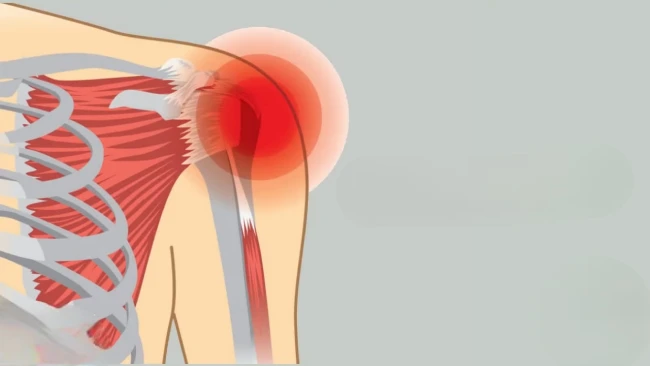If you’ve ever experienced a frozen shoulder, you know how painful and limiting it can be. The condition also called Adhesive Capsulitis, causes stiffness and pain in the shoulder joint, making it difficult to move your arms and perform daily tasks.
One of the biggest challenges of a frozen shoulder is finding a comfortable sleeping position that doesn’t exacerbate the pain. Today we will explore Six sleep positions that can alleviate the symptoms of a frozen shoulder to ensure you get the sleep you deserve.
Frozen Shoulder: What is it and Why Does it Happen?
A frozen shoulder causes pain and aggravates your shoulder joints. The connective tissue surrounding the shoulder joint, known as the capsule, becomes inflamed and thickened, restricting joint movement.
The exact cause of a frozen shoulder is not well understood, but it is thought to be related to the body’s natural healing response to an injury or inflammation in the shoulder. The shoulder capsule can become stiff and thickened, making it difficult to move the joint.
This condition is more common in women over 40, people with certain medical conditions such as diabetes and thyroid disorders, and those who have recently experienced trauma or surgery to the shoulder area.
How to Sleep With a Frozen Shoulder: Six Sleeping Positions
Frozen shoulder is a common condition that affects the shoulder joint and causes stiffness, pain, and limited mobility. Here are six sleeping positions that can help you sleep better and alleviate frozen shoulder symptoms.
#1 Use Head and Neck Support
The first step to sleeping with a frozen shoulder is using proper head and neck support. A supportive pillow can help to relieve pressure on the shoulder during sleep. A pillow that is too thick or flat can cause discomfort and strain the neck and shoulders.
Selecting a pillow that maintains the spine’s natural curvature and supports the back and neck is essential. Memory foam pillows are an excellent choice as they contour to the shape of your neck and head, providing the proper support.
#2 Sleep with a Body Pillow
A body pillow can help to support the shoulder and reduce pressure on the joint. Place the body pillow under the affected shoulder, hugging it gently. This will help to keep the shoulder in a neutral position, preventing it from slipping into a painful position.
Sleeping on your side with a body pillow can also help to keep your spine aligned, reducing the likelihood of developing back pain.
#3 Sleep on Your Unaffected Arm
Another way to ease frozen shoulder pain while sleeping is to use a body pillow. If you find sleeping on your affected side impossible, try sleeping on your opposite side. Lie down on your unaffected side, placing a pillow between your legs. This will help to support your spine and prevent lower back pain.
Rest your affected arm on a pillow, keeping it relaxed and comfortable. Sleeping on your unaffected side can help distribute the body’s weight evenly, reducing pressure on the affected shoulder.
#4 Side Sleeping with Pillow Support
Sleeping on the affected side could worsen the pain in a frozen shoulder. However, sleeping on the uninjured side with appropriate pillow support, like a body pillow, could help align your neck and spine, reducing the pressure on the injured shoulder.
Also, placing a pillow between your arms could help avoid any pressure on the frozen shoulder and provide extra support to the body. This position could help alleviate pain and improve the quality of your sleep.
#5 Back Sleeping with Arms by Your Side
Sleeping on your back may alleviate pressure on your frozen shoulder, reducing pain and improving sleep quality. However, Keeping your arms by your side and avoiding any rotation or elevation of the affected shoulder is essential.
Placing a pillow under your knees may help keep your spine in a neutral position, reducing pressure on the neck and shoulders. It’s also a good idea to avoid thick and firm pillows that may create stiffness in the neck and shoulders.
#6 Use a Heating Pad
Heat therapy could help alleviate the stiffness in your shoulder joint by increasing blood flow and muscle flexibility. Applying heat therapy to the affected shoulder before bed could help relax the muscles, reduce pain, and improve sleep quality.
Use a heating pad or a hot water bottle and apply it to the shoulder for 15-20 minutes before bed. Make sure you turn off the heating pad before sleeping to avoid overheating.
What Treatment is Best for Frozen Shoulders?
Various treatments are available for frozen shoulders, depending on the severity and duration of the symptoms.
Physical therapy is a standard first-line treatment involving gentle exercises and stretches to help improve the range of motion and reduce pain. Also, over-the-counter pain relievers and anti-inflammatory medications can help manage symptoms.
If conservative treatments are ineffective, your doctor may recommend more invasive treatments, such as corticosteroid injections, which can help reduce inflammation in the shoulder joint. In some cases, surgery may be necessary to release the stiffened shoulder capsule and improve movement in the joint.
Another treatment that has gained popularity in recent years is hydrodilatation. This procedure involves a fluid injection directly into the shoulder joint under X-ray or ultrasound guidance. The fluid stretches the capsule and frees up the joint, making it more mobile.
Hydrodilatation is often performed under local anaesthetic, effectively reducing pain and stiffness associated with a frozen shoulder. But, it is not suitable for everyone and may not be the best option for every patient.
Conquer Sleep with a Frozen Shoulder: Find the Proper Sleeping Position
Getting a good night’s sleep can feel like an uphill battle for those with a frozen shoulder. But solutions are available to alleviate the discomfort and improve sleep quality. First and foremost, choosing a comfortable sleep position that provides sufficient support for the head, neck, and shoulders is essential.
Also, stretching exercises and a heating pad can be helpful in soothing tension and reducing pain. Remember that finding the proper sleep routine may take some time and patience, but with persistence and determination, achieving restful sleep, you need to feel your best is feasible.




